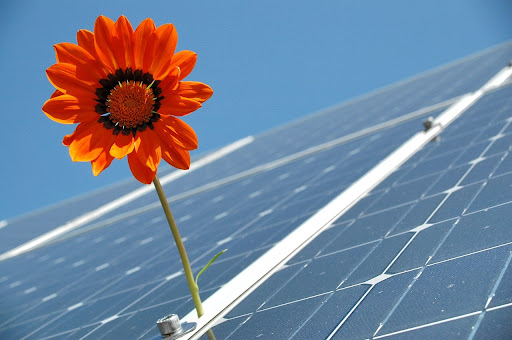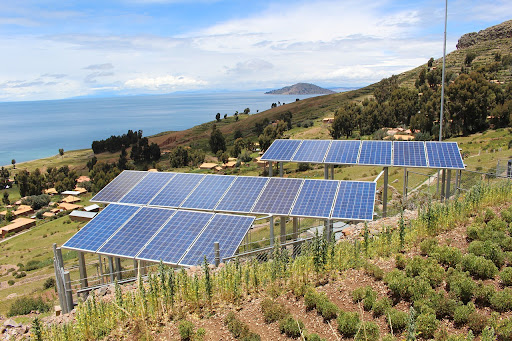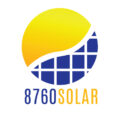
Having a solar array installed seems like a straightforward process. Find a field, place the panels, job done.
Only, it’s not as simple as that, given that placing solar panels on a farm requires special consideration if you want to get the best efficiency rates in the safest manner.
While it’s important for you to give your solar array placement some thought, there’s no need to stress! Our experts at 8760 Solar can run a full analysis of your farm and identify the best spots for your solar project. We’ll give you our recommendations, and then we can work together to make solar energy a reality for your business.
But for now, let’s take a closer look at what affects the placement of a solar array in Colorado.
In a Nutshell
- Solar placement needs careful consideration to avoid problems later down the line.
- 8760 Solar can perform an analysis on your farm to determine the best spot(s).
- Zoning and setback rules, land obstacles, shade, flood risk, livestock, and other factors all affect where you can place solar arrays.
- Roofs need to be structurally sound for solar and adhere to the IFC’s mandate.
- Solar is highly versatile and can be placed on your farm in a variety of ways for the best results.
Why Is Solar Array Placement Important?

As a farmer, you have access to a lot of land, so it’s easy to think that you could just pick a spot and have your solar panels installed there. However, there are several factors that influence your solar array’s final resting spot.
Overall, the key considerations are:
- The current recommendations or laws for safety and placement
- Access to sunlight
- Operations and maintenance
- Cost
Ultimately, you want a placement that doesn’t cost a whole lot extra to install and gives you the maximum possible efficiency. That way, you’re going to see the best return on your investment in the fastest amount of time.
Safety matters, too. Not just for yourself but also for your solar array. The panels need to be safely accessible, easy to maintain, and not somewhere where they are susceptible to receiving damage. And finally, good placement means you’ll be spending less time maintaining the array or fixing issues that may arise from a less desirable placement.
What Is the Best Orientation and Angle for a Solar Array?
Solar panels don’t have to directly face the sun, but you will get maximum efficiency if they do. Here’s what we would consider the ultimate orientation for best results:
- The panels should be mounted on a tilt of between 20 and 45 degrees.
- The best orientation is perpendicular to the sun in a south-facing position, but east or west-facing is still very effective.
- The tilt angle should be set so it is equal to the latitude of the land.
- The angle should be adjustable to account for the changing position of the sun throughout the seasons.
It’s worth noting that solar panels can work very well at slightly different angles and in different orientations. Even vertically mounted arrays have produced excellent results.
Again, it all depends on the land or space you have to work with. This is something your solar developer can discuss with you in the initial planning stages.
What Are the Considerations for Farm Solar Array Placement?
Zoning and Setback Rules
Depending on where you live in Colorado, there could be zoning rules that apply. These differ from county to county. For example, Weld County requires a zoning permit for solar arrays located on land that is five acres or less in size and only one solar array can be placed on a 35-acre parcel and cannot be adjacent to another.
Setback rules apply to how close you can place the solar array to your property line. Summit County, for example, has 35 and 50 feet setback rules in place for structures on agricultural land.
Make sure you check your local area for any zoning and setback rules that apply to you.
Install at Least 50ft From Buildings and Trees
While there is no specific law that dictates how far a solar array should be placed from a building, experts recommend leaving around 50ft of space between the panels and large structures or trees.
There are a few good reasons for this:
- Placing a solar array near buildings or trees can hamper its access to sunlight and reduce efficiency.
- Solar panels located too close to buildings are at risk of sustaining damage should a fire break out. Placing them further away will minimize this risk.
- Proximity to trees places the panels in danger of sustaining damage during storms or high winds. If a large branch or an entire tree were to fall on the panels, its weight could cause considerable damage.
With that said, it also makes good financial sense to place the solar panels 100ft from where the inverter is housed or 300ft from the meter box. Of course, the panels can be placed further away but they will require a longer, thicker cable to ensure the power is successfully delivered and not lost along the way.
If additional or upgraded cabling is required, this will have an impact on the overall cost of the installation.
Furthermore, always have any objects and buildings situated to the north of the array. This will prevent their shadow from reducing the solar array’s effectiveness.
Powerlines Are a No-Go Zone
It’s not a wise choice to install solar panels underneath overhead power lines. The poles or rails used to mount the solar panels are made from metal which can create a hazard if placed beneath power lines.
Overhead power lines and their placement have been designed to maintain adequate clearance between the energized conductors and the ground. This is chiefly to prevent dangerous contact with the line. If metal structures are placed too close to the power lines, they can interfere with this safe clearance and increase the risk of contact.
If the power line were to fall, the exposed voltage would wreak havoc on the solar panels and on anyone standing close by.
Additionally, utility companies own the access rights to any land where power lines are situated and they must be kept clear to ensure they can be accessed. Placing a solar array in the middle of these access paths could cause a serious problem if the utility company can’t get through to perform repairs or maintenance.
If you do this, you could end up being forced to remove your solar array altogether and there may be penalties to pay for obstructing access.
Overall, it’s highly recommended to place them a safe distance away from overhead lines; around 15 – 20ft away is sufficient.
County Roads: Not Worth It
Farmland bisected by county roads is a common sight and it’s likely you have one or two across your land providing access between towns and villages.
You may have a spot of land ideal for solar panels that just so happens to have a county road running through it.
Unfortunately, it’s often not possible to pass the cables across the road (either by digging trenches or installing them overhead) without first gaining special “right of way” permission from The Colorado Department of Transportation (CDOT).
If it’s a dirt road, this doesn’t present as much of a problem and it can be easier to gain permission, but any road surfaced with asphalt or bitumen presents a significant challenge.
Trying to get permission to run cables over or under an asphalt/bitumen road can be a lengthy process that can add significant costs to your installation. Not to mention the added complications (and costs) that come with installing electrical cables under or over a road.
Overall, we advise our clients to avoid this option where possible because when you weigh up everything above, it’s just not worth it.
Shaded Areas
Colorado is a mountainous state and while the side of a mountain isn’t the obvious choice for a farm’s location, cattle and sheep thrive on the abundant grass growing on the rolling slopes. As such, many ranches can be found in Colorado’s mountain regions.
This presents a problem for solar. Mountains create shade. Lots of shade.
While solar panels do work in the shade, they certainly aren’t as efficient as they are in full sunlight. And considering the effort and expense of installing solar, you need to ensure it’s going to be effective enough for you to get a decent return on your investment.
Look for areas of your farm or ranch that receive the least amount of shade. Some shade is okay, but if the area spends more than an hour or two per day out of direct sunlight, you need to look elsewhere.
It’s not just mountains that create shade, either. Nearby buildings, structures, large trees, and other obstacles may create a shade problem.
If it’s impossible to avoid shade from structures, the general rule of thumb is to install the array at twice the height of the structure to the north. If the shade is coming from buildings, consider placing the array on the roof instead of the ground.
Areas Vulnerable to Flooding
If areas of your farm are susceptible to flooding, this presents a unique set of challenges for a solar array.
Placing them on a floodplain requires you to install the electrical wiring above the flood line to maintain safety. Often, to do this, it is necessary to raise the panels higher off the ground. This increases the cost of the installation and also makes it hard for you to maintain or clean the panels.
Furthermore, many insurers will refuse you coverage if you installed a solar array in an area that floods. If you do happen to find one that does provide coverage, expect to pay a hefty premium for the privilege.
Overall, it’s cheaper and less risky to avoid floodplains altogether.
Areas With Livestock or Horses
Sheep are one of the few farm animals that can happily coexist in a field with solar panels. They keep the vegetation down while enjoying the shade provided by the panels. They’re also small enough to wander underneath solar panels without damaging them.
Goats, on the other hand, like to jump and you can bet your bottom dollar a solar array will look like the ultimate playground!
Cattle are not ideal either. They certainly don’t jump, but they do love a good scratch and will eagerly hurry over to your solar array to relieve their itch. This goes for horses as well.
That doesn’t mean you can’t have a solar array where you keep livestock. You can, but you will need to install a fence around the panels to keep the intrigued animals at a safe distance.
Areas With Wildlife
It’s not necessary to fence off your solar array to prevent wildlife from accessing it. The only wild animal in Colorado that could damage a solar panel is a bison. Since there are only two wild herds left in the state (located in Genesee Park and Daniels Park) an encounter is highly unlikely.
To conserve wildlife, Colorado Parks and Wildlife recommend you avoid developing areas located near playas (dry lake) and riparian zones (river banks, lake shores, pond edges, etc.). These delicate ecosystems are home to many vulnerable birds and waterfowl. A solar array’s reflective surface can cause these animals to confuse it for water which results in a lot of deaths by collision.
Farm Solar Array Placement: How Close Should It Be to Farming Activity?
It’s true that through the practice of agrivoltaics, solar panels and some types of farming can exist on the same piece of land. Growing salad crops, fruits, and other vegetables is ideal for such a setup.
However, farming practices that create a lot of dust, dirt, and debris would be better done at a distance from your panels.
For example, cattle ranches tend to have dry and dusty areas. This dust quickly covers the surface of the solar panel and reduces its efficiency. Not to mention the extra cleaning work it creates for you. Similarly, spraying manure and plowing land also have the same effect.
Pesticides and herbicides, on the other hand, do not present a problem for your solar array. It’s not recommended to spray the panels directly with such substances but any residue that lands on them is unlikely to do any harm.
A quick way to see if solar panels would be affected by nearby farming is to place a white object, such as a piece of painted wood, a piece of canvas, a tarp, or similar in the desired spot. Carry on as normal and check every now and then to see how dirty it is getting.
If it gets dirty quickly, clean it and place it further away. Keep repeating the process until it’s far enough away to mostly avoid the dirt.
Roof-Mounted Solar Arrays for Farms: What to Consider
If land space is at a premium or your farm is particularly shaded, solar panels will be most efficient if placed on the roof. The added benefit here is that they don’t take up any additional space and are installed close to the inverter, so no extra cabling is required.
It’s important to note, though, that not all roofs are suitable. It depends on the structure and how it’s built but the general rules for roof-mounted panels are:
- The building should be less than 40 years old.
- The roof must be sturdy enough to manage the weight of the solar array. Factor in 2-6 pounds per square foot (two tonnes for a 25 kWh system).
- Although solar panels can be fixed to most types of roofs, composite shingles and metal roofing are the most sturdy.
- South-facing roofs with a 30-45-degree pitch will see the best results, however, even a 7-degree tilt is suitable and will still receive plenty of sunlight.
- The size of the roof space should be big enough to accommodate your energy needs.
- The roof should be free from shade and hazards such as overhanging tree branches.
- Check your local zoning rules for roof-mounted arrays – a permit could be required.
The International Fire Code (IFC)
The IFC has been adopted by 42 states and as such, you must adhere to the IFC’s requirements regarding roof-mounted solar panels.
The IFC mandates the following:
- A setback consisting of a 36-inch pathway between the top of the roof’s ridge to the edge of the solar panels that spans the entire length of the roof.
- For arrays that cover 33% or more of the roof’s surface, a 36-inch setback on both sides of the solar array is required to create a clear path on each end.
What if I Don’t Have a Suitable Space Large Enough for My Solar Array?
This list of considerations can place quite a few limits on suitable locations and after going through it all, you may find that you are lacking an area with enough space for the size installation you require.
The fantastic thing about solar panels is that they’re wonderfully versatile.
We’re too used to seeing images of row upon row of gleaming solar panels but the truth is, your setup doesn’t need to look anything like this. In fact, aside from aesthetics, there’s no real benefit to placing two or more arrays together.
Solar arrays can be placed on poles, on your roof, or in rows in a configuration that makes sense for you. Each and every solar project is completely bespoke – there’s no cookie-cutter approach here.
If you want a row of panels in a field and another on your roof, it’s possible. If you want several pole-mounted arrays dotted around your land, it’s also possible!
Talk to 8760 Solar
There’s no need to agonize over where to put your solar array. You can leave that to our team of professionals at 8760 Solar. To arrange your farm’s free analysis, text “READY” to 719 470-0254 or get in touch via email: sales@8760solar.com.
We’ll help you find the perfect solar setup in the perfect location so you can start enjoying the benefits of solar energy.
Frequently Asked Questions
What Is the Best Placement for Solar Panels?
The best placement for solar panels is in a clear, south-facing area that receives full sunlight and no shade. The panels should also not be in proximity to anything that could damage them, such as overhanging trees or power lines.
What Is the Ideal Orientation for a Solar Array?
The best orientation for solar panels is for them to be facing southwards and tilted between 20-45 degrees, depending on the latitude of the land.
Are East or South-Facing Solar Panels Better?
South-facing panels are better for those located in the northern hemisphere as this position is the most effective for harvesting the sun’s energy. Panels can be positioned eastwards, but they must be mounted at an angle flatter than 30 degrees in order to catch the most direct sunlight.
How Far Can a Solar Array Be From a House?
A solar array can be mounted several hundred feet away from a house. However, the further away it is, the longer and thicker the cable needs to be to ensure effective power transition, which adds to the overall cost of the installation.
